Send in the CLOWNS!
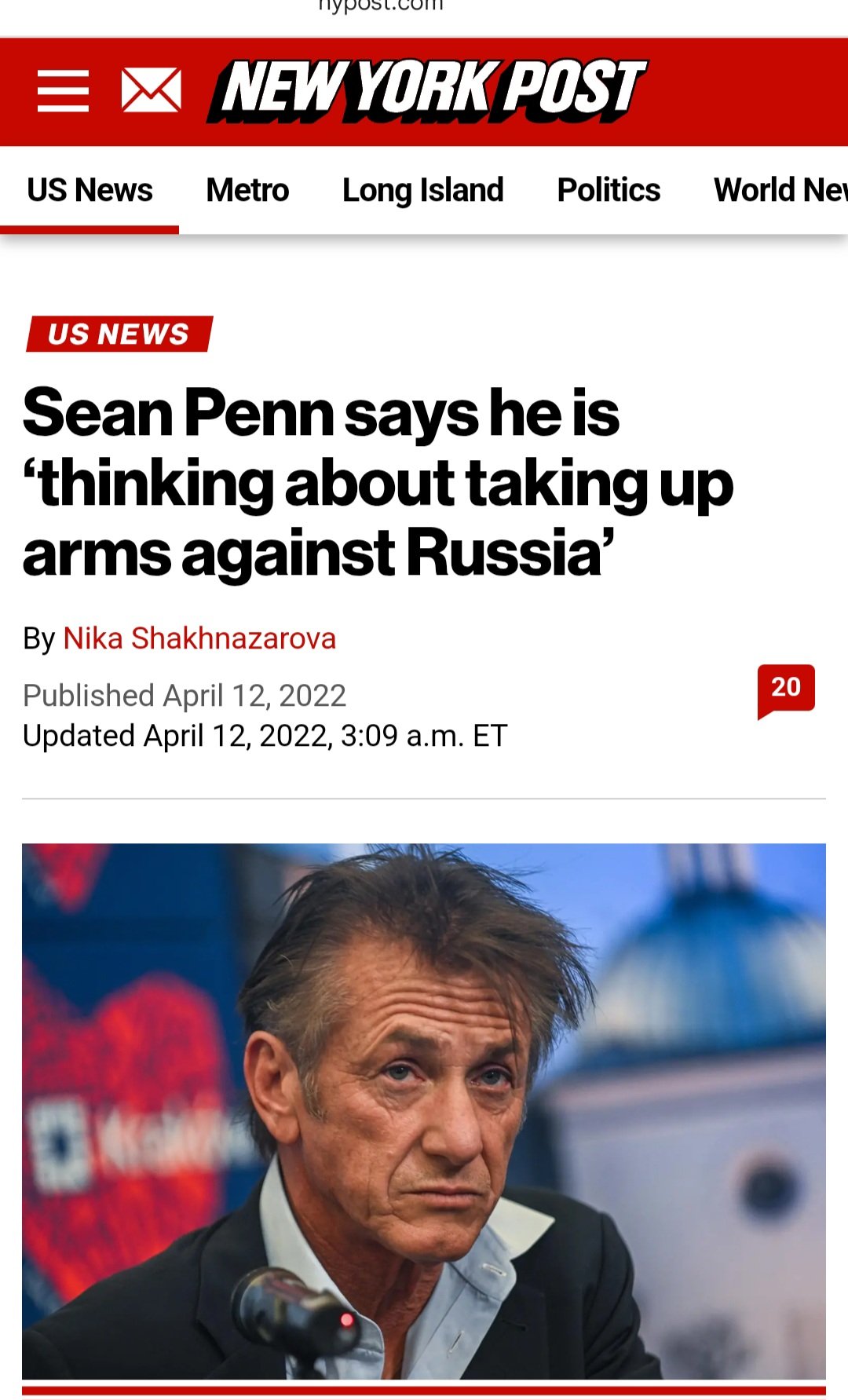
Posted on 02/24/2024 5:59:01 AM PST by SpeedyInTexas
This list only includes destroyed vehicles and equipment of which photo or videographic evidence is available. Therefore, the amount of equipment destroyed is significantly higher than recorded here. Loitering munitions, drones used as unmanned bait, civilian vehicles and derelict equipment are not included in this list. All possible effort has gone into avoiding duplicate entries and discerning the status of equipment between captured or abandoned. Many of the entries listed as 'abandoned' will likely end up captured or destroyed. Similarly, some of the captured equipment might be destroyed if it can't be recovered. When a vehicle is captured and then lost in service with its new owners, it is only added as a loss of the original operator to avoid double listings. When the origin of a piece of equipment can't be established, it's not included in the list. The Soviet flag is used when the equipment in question was produced prior to 1991. This list is constantly updated as additional footage becomes available.
(Excerpt) Read more at oryxspioenkop.com ...
Send in the CLOWNS!



100% :P
Reporting From Ukraine:
https://www.youtube.com/@RFU/videos
The complete transcript.
—
[ Russian River Crossing Goes Terribly Wrong! ]
Today [ Apr 12, 8 pm ], there are a lot of important updates from the Borova direction.
Here, the Russians launched a hurried counterattack to try and halt the 3rd Assault Brigade’s advance. However, the attack failed disastrously, as the elite Ukrainian unit turned the Russian assault into a massacre, shredding nearly half a Russian battalion in one day alone.
The Ukrainian goal is to undermine the upcoming Russian spring offensive towards Borova and Lyman by launching a crushing counterattack to eliminate the Russian bridgehead over the Zherebets river, which the Russians planned to use to launch their offensive. The Russians understood the critical nature of the situation, so they launched a hurried response across the frontline to stop the Ukrainian advance.
Due to the shortage of armored vehicles, Russian forces were forced to rely solely on infantry, saving their limited armored reserve for the final offensive itself. Additionally, the marshy riverbanks and lack of viable crossing points forced Russians to deploy makeshift pontoon bridges, meant to allow large groups of infantry to make it across and overwhelm the Ukrainian defenses.
However, due to the makeshift bridges’ proximity to Ukrainian lines, Ukrainians were able to detect, target, and destroy them almost immediately. This prevented the Russians from moving large numbers of soldiers across the river, leading to a lack of sufficient forces for an overwhelming series of assaults.
However, most importantly, due to the sudden appearance of several makeshift infantry pontoon bridges, Ukrainians immediately understood that the Russians were planning a large pure-infantry response, allowing the 3rd Assault Brigade to get the appropriate defenses ready for battle.
Looking at the battlefield, we can see there are only a few interconnected tree lines connecting Russian lines to the Ukrainian positions. However, the 3rd Assault Brigade had established strong defenses here, locking down and preventing any Russian infiltration attempt through them, as these defenses proved insurmountable in the previous months of Russian attempts to do so.
For this reason, Russian commanders decided to launch their attacks across open fields instead, assuming that the losses, while high, would still be lower than if they tried to take on Ukrainian defenses head-on.
To avoid immediate and complete destruction, Russian soldiers used tactics specifically meant to reduce casualties to drone strikes, by keeping a large distance between them and only moving in pairs of 2 soldiers at a time. This was done to minimize the risk of mass-casualties to a single strike, forcing Ukrainians to use many more drones to eliminate single targets, increasing the chance of Russian soldiers making it across the fields alive.
Unfortunately for Russians, Ukrainians had enough drones in reserve, as they released a 2.5 minute compilation of close to 100 individual FPV drone strikes.
However, as the assault force consisted entirely of infantry, Ukrainians deployed specific 5 to 7-inch large kamikaze drones, which are very fast and agile due to their small size. While their agility was high enough to allow Ukrainians to hit the smaller targets individual Russian soldiers presented, they still carried enough explosive payload to achieve the desired effect.
Ukrainians also deployed reconnaissance drones to observe the effectiveness of the kamikaze strikes, armed with drone-dropped grenades to finish off any misses. These drones were also able to point out targets for the FPV drone operators, allowing for maximum efficiency during the defense.
During the Russian assault, Russians lost over 229 soldiers, nearly half a Russian battalion in one day. During the whole week of 3rd Assault Brigade operations, they managed to eliminate a total of 446 Russian soldiers, 16 artillery pieces, dozens of armored vehicles and trucks in the rear, and 10 makeshift bridges Russians deployed to facilitate the crossing.
Overall, the 3rd Assault Brigade has successfully thwarted the Russian attempt to salvage their bridgehead across the Zherebets river, allowing for a continued push to fully eliminate and clear the remaining Russians from the area. As the destroyed crossing points likely forced Russians to commit soldiers already present in the bridgehead to the suicidal assaults, Russian defenses will be weakened, and Ukrainians might be able to exploit Russian weaknesses to finish their operation before Russians can re-man their positions.
https://www.youtube.com/watch?v=BfSwLnC9w2I
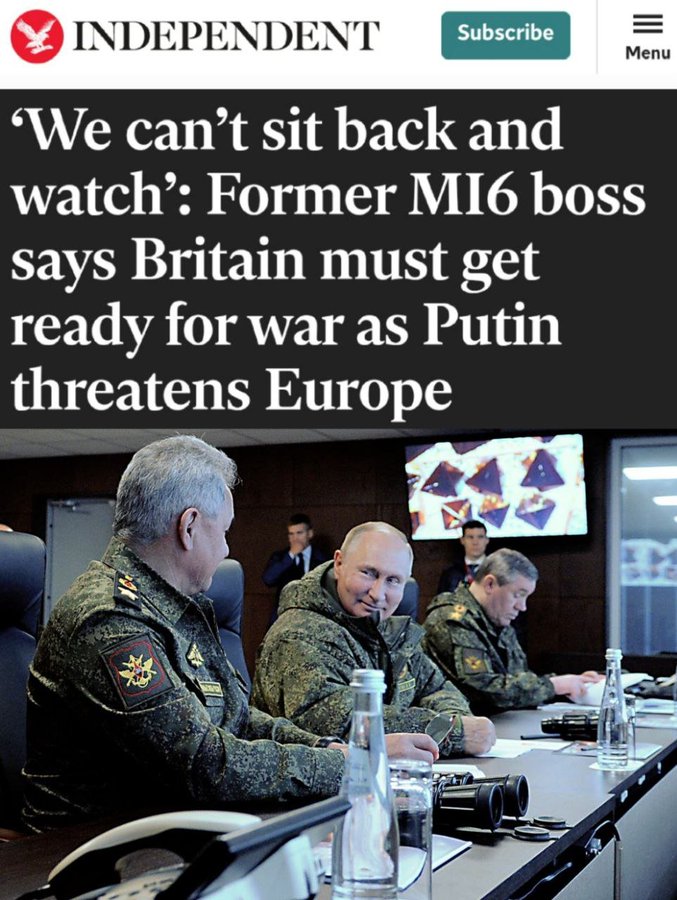
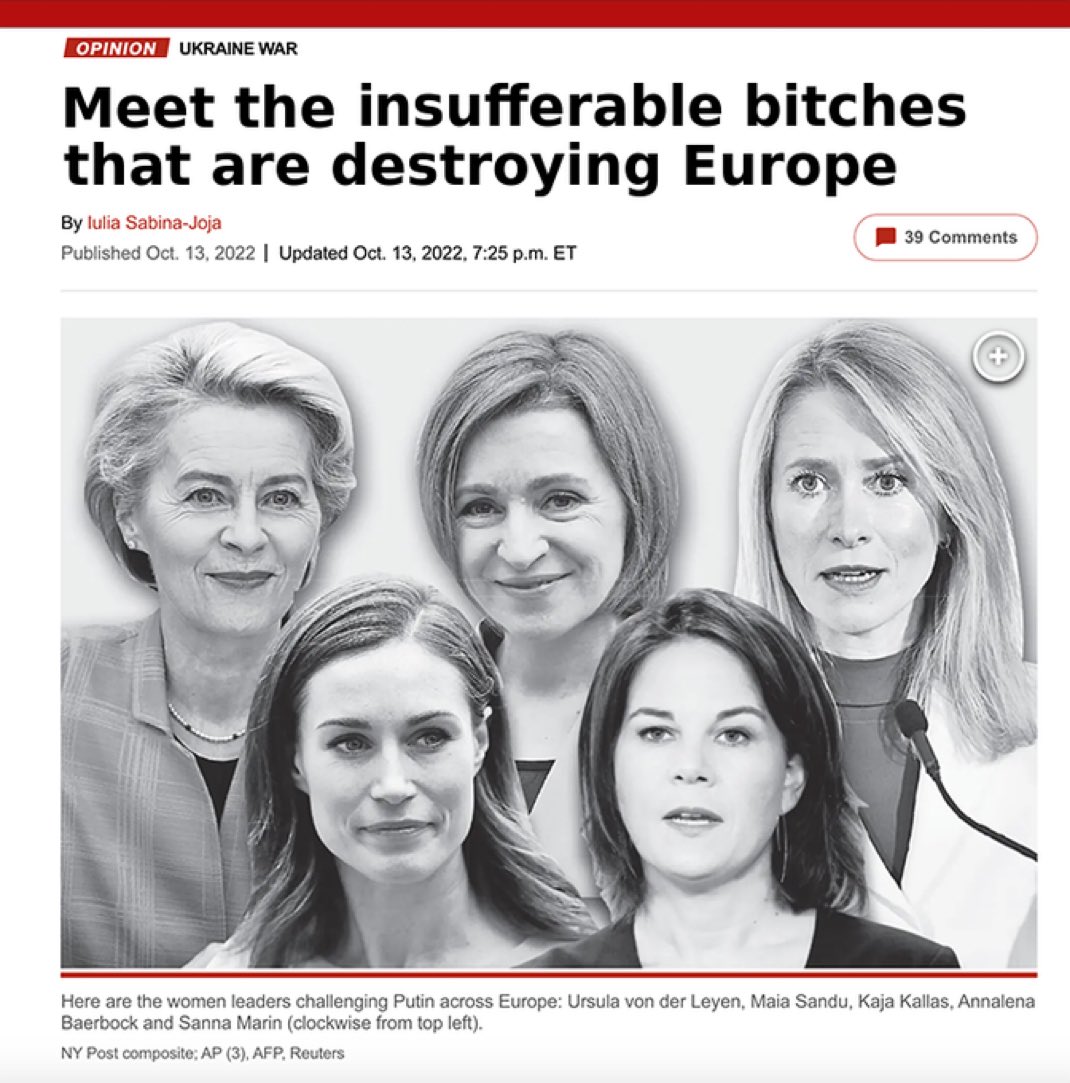
The same people outraged that Noem has a Rolex are fine with Zelensky having a $35M Florida estate pic.twitter.com/V2x8cnEzni— Carson Krow (@carsonkrow) March 29, 2025
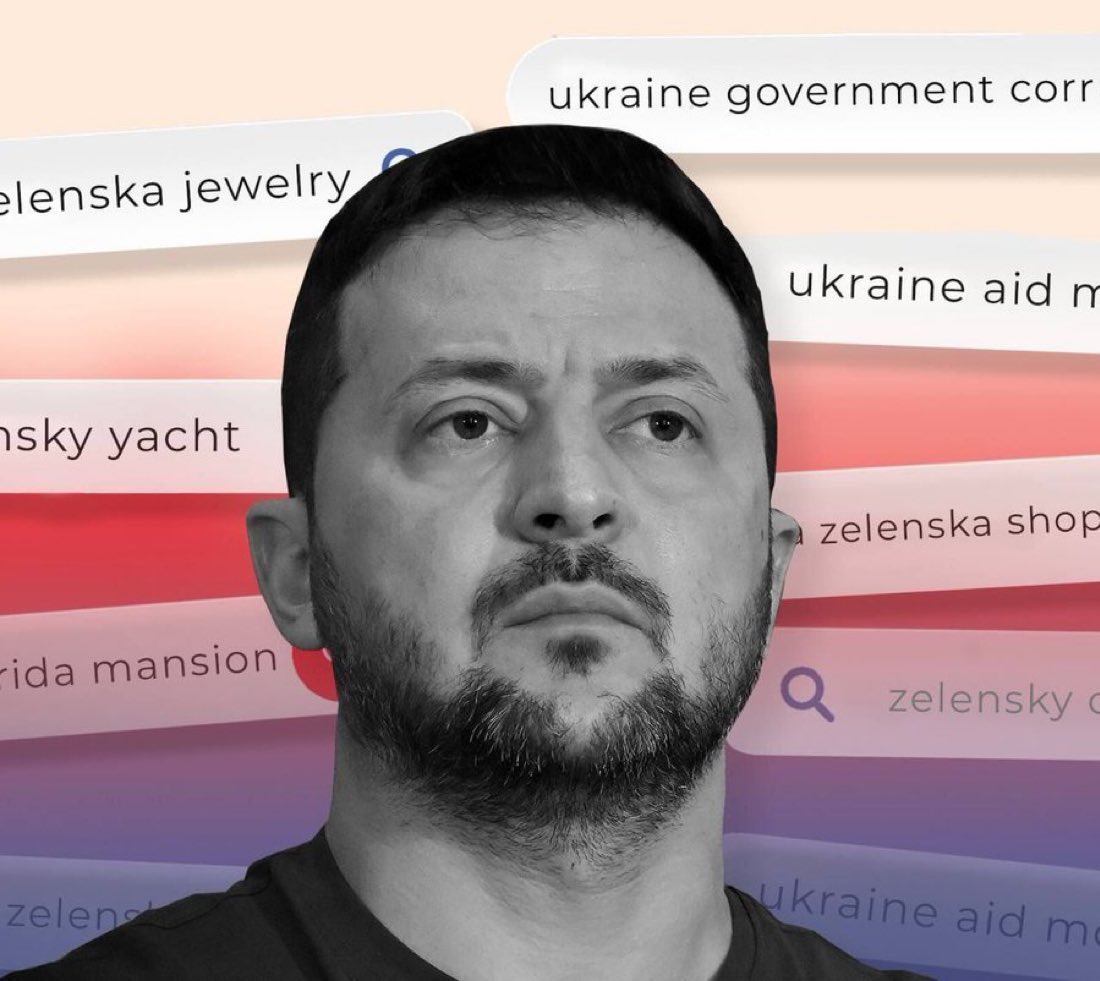
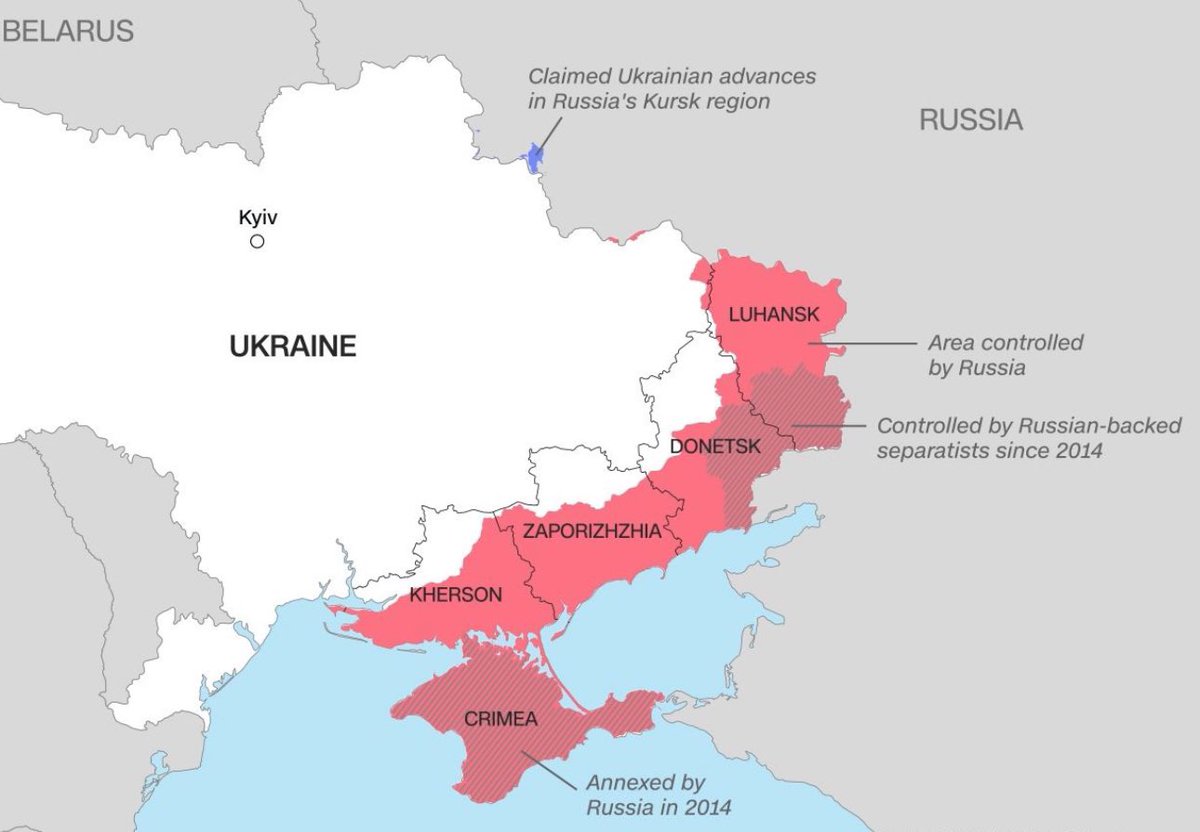
BREAKING:
Reuters reports that, after a meeting with Russian Envoy Dmitriev, Trump’s Envoy Witkoff told Trump that the fastest way to broker a ceasefire would be to give Russia 4 regions: Kherson, Zaporizhzhia, Luhansk & Donetsk.
Ukraine still holds:
- 42% of Kherson (ca. 300… pic.twitter.com/M0c0fDx8th— Visegrád 24 (@visegrad24) April 11, 2025
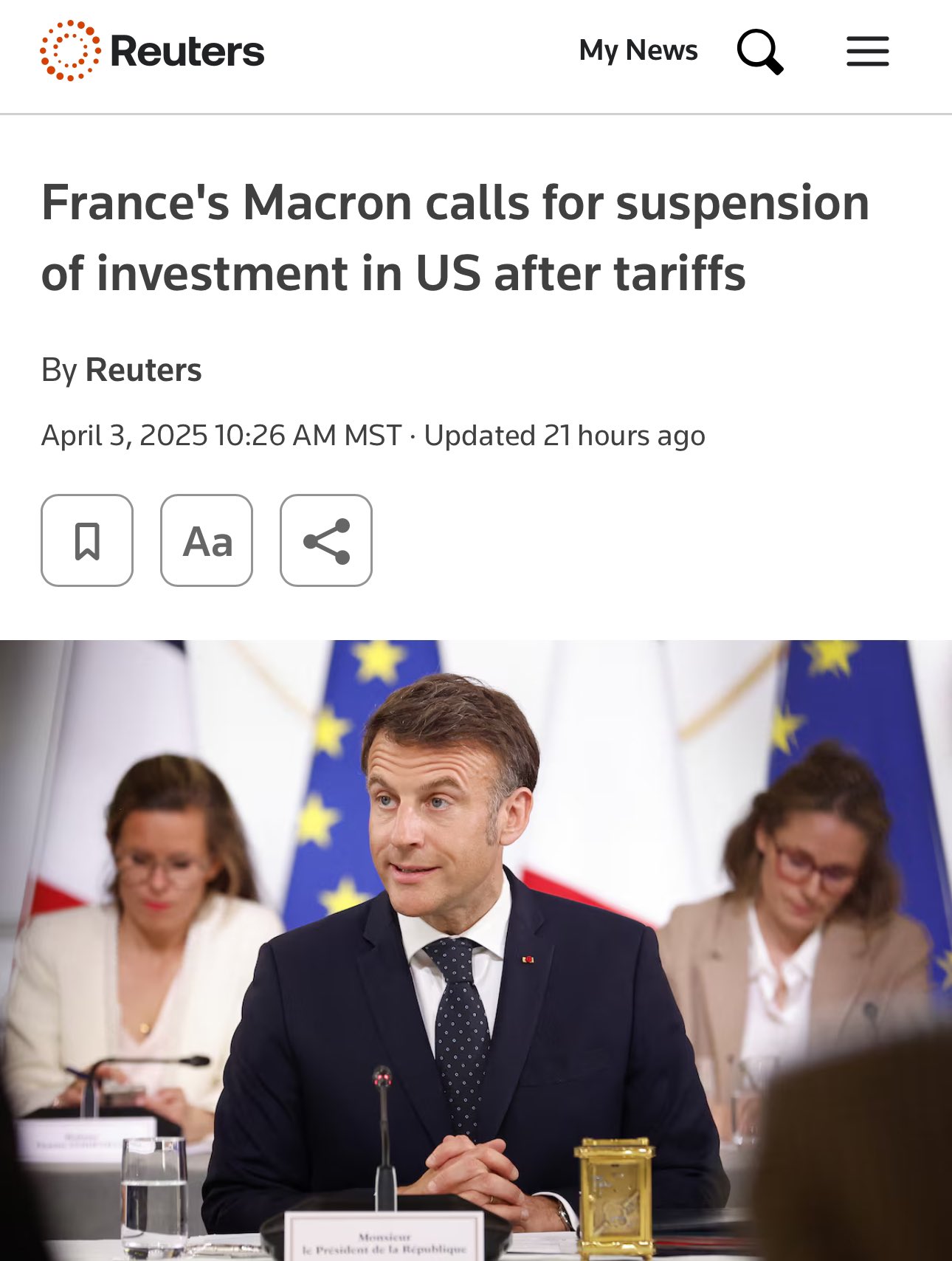
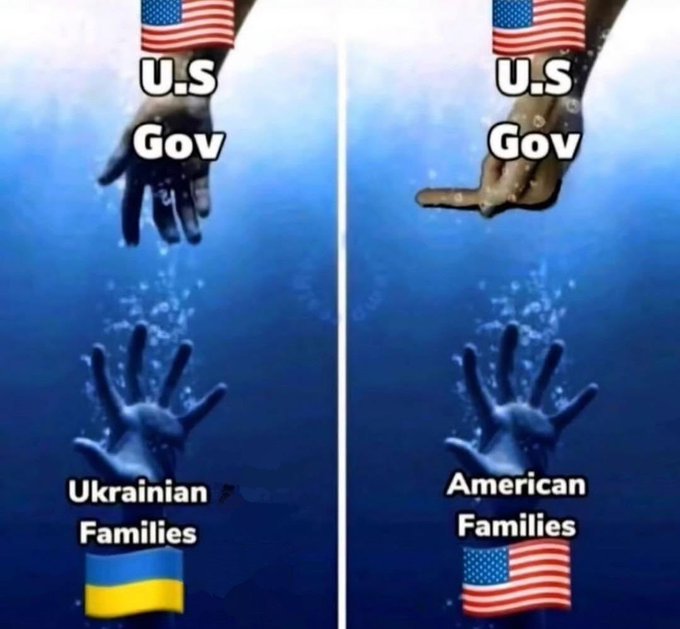
That number, roughly 2.5% of the Russian state budget, comes as Russian oil trades over $20 a barrel less than Russian budget planners forecasted.
https://x.com/Osinttechnical/status/1911144814344536142
❗️The enemy equipped these workshops for preliminary preparation of UAVs and for their storage.
https://x.com/Maks_NAFO_FELLA/status/1911460780861440478
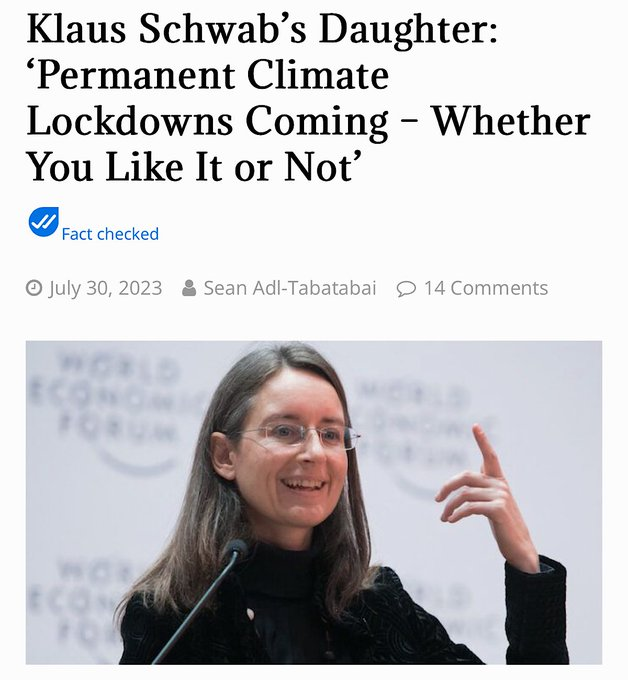
Good hit
Russian Offensive Campaign Assessment, April 13, 2025
Kremlin Spokesperson Dmitry Peskov said that ongoing US-Russian negotiations are unlikely to result in “lightning-fast results,” contrary to US President Donald Trump’s stated objective of achieving a general ceasefire and lasting peace agreement in Ukraine in the near future. Peskov told Kremlin journalist Pavel Zarubin on April 13 that “everything is moving very well” regarding US-Russian bilateral talks and discussions about the war in Ukraine but that there will likely not be immediate results.[1] Russian Ministry of Foreign Affairs (MFA) Second Department of Commonwealth of Independent States (CIS) Director Alexei Polishchuk gave an interview to Russian state media group Rossiya Today (RT) and stated that Russia is willing to engage in negotiations that “take into account the modern realities” of the war and eliminate the “root causes” of Russia’s war in Ukraine.[2] Russian officials have repeatedly claimed that any peace process in Ukraine must address these so-called “root causes.”[3] Russian Foreign Minister Sergey Lavrov previously defined “root causes” as NATO’s alleged violation of obligations not to expand eastward and Ukraine’s alleged discrimination against Russian-speaking minorities in Ukraine.[4] These so-called ”root causes” are a reference to Russia’s pre-war demands that effectively amount to Ukraine’s full capitulation and the installation of a pro-Russian government in Ukraine.[5] Peskov’s and Polishchuk’s comments also reflect the Kremlin’s continued rejection of President Trump’s stated approach of first establishing a ceasefire and then negotiating a broader peace agreement and the Kremlin’s commitment to war aims that are incompatible with President Trump’s goal of achieving a lasting peace in Ukraine.
It is unclear if Russian officials will agree to any meaningful monitoring mechanisms, however, as Russian officials continue to reject the possible future deployment of a European peacekeeping contingent to Ukraine.[9] Polishchuk responded to a question about whether Russia will agree to sending peacekeepers to Ukraine on April 13 and stated that peacekeeping deployments are “not on the agenda.”[10] Polishchuk insinuated that Russia and Ukraine must conclude a peace or ceasefire agreement before considering the issue of peacekeepers and claimed that the French- and British-led “Coalition of the Willing” is attempting to intervene in Ukraine by forming what it is calling a “reassurance force.” Polishchuk accused the Organization for Security and Co-operation in Europe’s (OSCE) Special Monitoring Mission to Ukraine of falsifying reports on Russian violations of the Minsk agreement between 2014 and 2022, despite indications that Russia itself maintained significant influence over the OSCE and seriously hindered the OSCE’s monitoring and enforcement mandates during this time.[11] The Kremlin’s ongoing refusal to engage with US and European proposals to establish a peacekeeping force in Ukraine and Polishchuk’s accusation that the OSCE has previously acted in Ukraine’s — and not Russia’s — favor underscores the Kremlin’s continued unwillingness to accept any kind of monitoring mechanisms that could undermine Russia’s ability to attack Ukraine again in the future.
Ongoing milblogger complaints about the Russian military’s conduct of the war in Ukraine reinforce ISW’s assessment that Russian tactics will degrade Russia’s manpower and materiel resources and contribute to slowing Russian advances along the frontline. A Russian milblogger and former Storm-Z instructor claimed on April 12 that the Russian military command is using a “thousand cuts” tactic against Ukraine to the detriment of Russian forces and complained that deploying poorly equipped and poorly trained Russian infantry to attack Ukrainian defensive positions only results in marginal gains and heavy losses.[23] The milblogger argued that the Russian military command is attempting to present high manpower and materiel losses as necessary by falsely portraying the preceding combat engagements as evidence of Russia‘s coordinated “grinding” down of Ukrainian defenses.[24] The milblogger claimed on April 12 and 13 that the Russian military command is ignoring the fact that Russian forces are facing shortages of materiel necessary for offensive operations, which contributes to issues conducting assaults and to the failure of small group assaults along the frontline in Ukraine.[25] The milblogger claimed that frontline Russian commanders are under significant pressure from their superiors to conduct more infantry assaults, do not have sufficient time to plan new assault routes, and that some frontline commanders order assaults simply to be able to report something back to their superiors. ISW previously assessed that these grinding assaults will likely degrade available Russian manpower and materiel significantly enough that Russian forces will have to decrease offensive tempo on lower-priority sectors of the front.[26] The milblogger speculated that Russian forces are in a self-perpetuating cycle, where poorly trained infantry killed or injured in failed assault attempts are replaced with similarly poorly trained infantry, who are again sent into doomed assaults.[27] The milblogger’s claims reflect the general trend of slowing Russian advances along the frontline recently and highlight some of the critical issues that Russian forces will have to address if they intend to make significant territorial gains or conduct more sophisticated offensive operations in Ukraine in the future.[28]
https://www.understandingwar.org/backgrounder/russian-offensive-campaign-assessment-april-13-2025
According to our sources in the Church, in connection with this, Patriarch Kirill appealed to Vladimir Putin with a request to completely ban neopaganism and its manifestations at the legislative level.
“Vladimir Vladimirovich. We pray for the power of Russian weapons, so that our missiles, drones, shells accurately hit the Nazis in Ukraine. And so that they are feared throughout the world. We pray that we defeat the Americans through negotiations. We constantly pray for your life and health. But the effectiveness of these prayers is falling due to the fact that in Russia there are many enemies of the true religion - Orthodoxy. There are too many fortune tellers, sorcerers and other evil spirits in society. And some of the soldiers at the front worship pagan idols, having forgotten what God Russia believes in,” one of the channel's interlocutors quoted the appeal.
The patriarch asked the president not only to ban neo-paganism, but also to punish sorcerers, fortune tellers and all those “who worship fake gods and idols” with prison terms. The head of the Russian Orthodox Church wants to pay special attention to the front, where “certain supporters of neo-pagan cults are corrupting the soldiers.” And he warned that if tough measures are not taken, Russia will face serious problems – at the front and elsewhere. He considers the State Duma’s efforts to combat fortune tellers to be insufficient. And he expects decisive action from the president. Kirill is also confident that it is necessary to punish those who use the services of fortune tellers, sorcerers, tarot readers and various magicians. In his opinion, serious fines can be introduced for such people . Putin, according to sources, “listened to the request of the head of the Church with understanding.” And passed it on to experts responsible for religious issues for study. A decision on this issue will come later.
https://t.me/kremlin_secrets/5536
Why do today's decision-makers in the Kremlin believe this?
The explanation is that they are continuing the traditions of the Moscovite Russia. In Muscovite Russia, supernaturalism was a fundamental part of daily life.
See Orthodox Russia, Belief and Practice Under the Tsars Edited by Valerie A. Kivelson, and Robert H. Greene
https://www.psupress.org/books/titles/0-271-02349-X.html
This means we should stop calling the country Russia and switch to saying Muscovy.
The Principality of Moscow or Muscovy (1263–1389), later the Grand Principality of Moscow (1389–1547), was a medieval Russian principality. Its capital was the city of Moscow. https://en.wikipedia.org/wiki/Principality_of_Moscow
Budanov reported that the Russian 112th and 448th missile brigades attacked the city of Sumy with two Iskander-M ballistic missiles. Another war crime of Russia — ballistic strike on Sumy, killing of Ukrainian civilians. Many people went to church on Palm Sunday, some were returning home,” Budanov wrote on Telegram.
The Russian military launched an attack on the city of Sumy the morning of Palm Sunday, killing at least 34 and injuring another 117 people. Two children were killed in the attack. The attacks were launched from Russia's Voronezh and Kursk oblasts, specifically from the Liski and Lezhenski settlements, respectively, Budanov said.
Multiple officials, including Presidential Office Head Andrii Yermak and U.S. Ambassador Bridget Brink, reported that Russia used cluster munitions in the attack on Sumy. The use of cluster munitions in civilian areas is considered a violation of international humanitarian law. Many international leaders have denounced Russia's attack, calling it a war crime.
Disclaimer: Opinions posted on Free Republic are those of the individual posters and do not necessarily represent the opinion of Free Republic or its management. All materials posted herein are protected by copyright law and the exemption for fair use of copyrighted works.